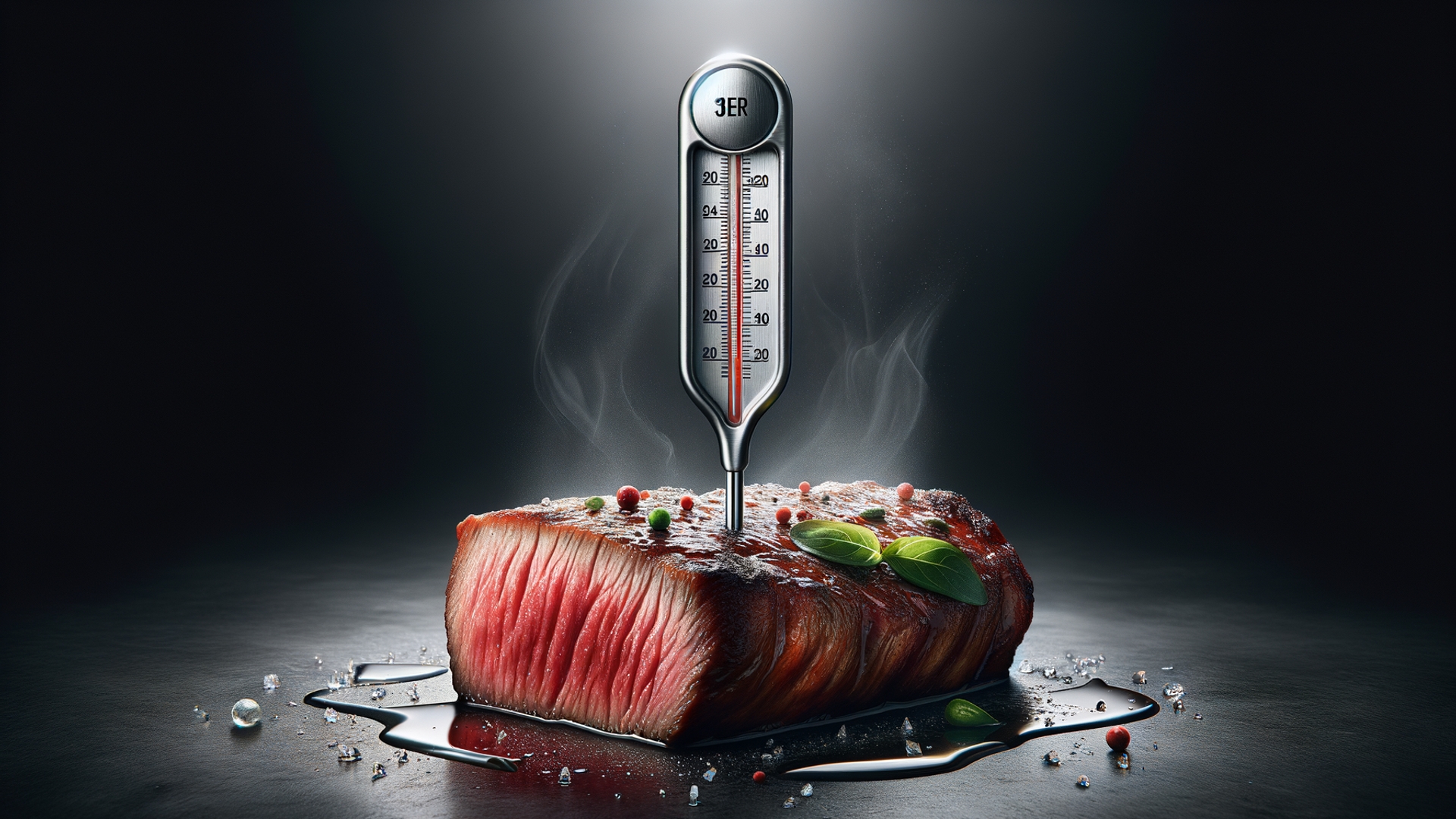Buying meat in bulk can save money, reduce trips to the store, and provide a steady supply of protein. However, proper storage is crucial to maintain the quality and safety of the meat. In this post, we will explore the best food storage solutions for bulk meat purchases to ensure your meat stays fresh for an extended period.
Why Proper Storage Matters
When you buy meat in bulk, you’re investing in large quantities that need to be preserved. Improper storage can lead to freezer burn, spoilage, and loss of taste. Proper storage not only extends the shelf life but also maintains the flavor and texture of your meat.
1. Freezing Meat for Long-Term Storage
Freezing is one of the most common and effective methods for preserving bulk meat. It slows bacterial growth, preventing spoilage, and helps maintain the meat’s texture and flavor.
Best Practices for Freezing Meat:
- Wrap Properly: Use heavy-duty freezer bags or plastic wrap. For added protection, wrap the meat in butcher paper or foil before placing it in a freezer bag.
- Vacuum Sealing: Vacuum sealing removes air from packaging, significantly reducing the chance of freezer burn. It’s ideal for longer-term storage.
- Portioning: Divide meat into meal-sized portions before freezing to avoid thawing and refreezing, which can compromise quality.
- Labeling: Always label packages with the date to keep track of how long the meat has been stored.
2. Using a Freezer with a Deep Freeze Function
If you purchase meat in large quantities, investing in a deep freezer can be an excellent solution. Deep freezers offer more space and usually keep temperatures more stable than regular refrigerators.
Why a Deep Freezer is Ideal for Bulk Meat Storage:
- Larger Capacity: Deep freezers offer much more space, allowing you to store larger quantities of meat.
- Stable Temperature: They maintain a consistent, cold temperature, which is crucial for preserving meat.
- Energy Efficiency: Some deep freezers are more energy-efficient than standard freezers, making them a good long-term investment.
3. Refrigeration for Short-Term Storage
If you plan to use meat within a few days or a week, refrigeration is a good option. However, you must follow proper refrigeration methods to avoid spoilage.
How to Store Meat in the Refrigerator:
- Keep Meat in the Original Packaging: If you plan to use the meat soon, keep it in its original packaging. If it’s not vacuum-sealed, you can use plastic wrap, foil, or a plastic bag to keep it fresh.
- Place on a Lower Shelf: Store meat on the bottom shelf of the fridge to avoid cross-contamination with other foods.
- Temperature Control: The refrigerator should maintain a temperature of 32°F to 40°F (0°C to 4°C). Meat stored above this temperature may spoil faster.
4. Canning Meat for Storage
Canning is a preservation method that allows you to store meat for long periods without refrigeration. It involves sealing meat in jars and heating it to destroy bacteria. While not as common as freezing, canning is an excellent option for those looking to store meat without electricity.
Steps for Canning Meat:
- Choose the Right Meat: Choose lean cuts for best results. Fatty meats don’t can as well and can spoil faster.
- Pressure Canning: Always use a pressure canner, as the temperature reached during pressure canning kills harmful bacteria.
- Add Liquid: Meat can be canned with broth, water, or its own juices. Make sure there’s enough liquid to cover the meat completely in the jar.
- Seal and Store: After sealing the jars, store them in a cool, dark place. Canned meat can last up to one year if stored properly.
5. Using Drying or Dehydration for Meat
Dehydrating meat removes moisture, which inhibits bacterial growth. This method is ideal for making jerky or dried meat that can be stored at room temperature.
Dehydrating Meat for Long-Term Storage:
- Prepare the Meat: Trim excess fat from the meat, as fat can become rancid over time. Slice it into thin strips to ensure it dries evenly.
- Use a Dehydrator: A food dehydrator is the best tool for drying meat. The dehydrator maintains consistent heat, which ensures thorough drying.
- Vacuum Seal: After dehydration, vacuum seal the meat for storage. It will last up to 6 months in a sealed bag.
- Storage: Store dried meat in a cool, dry place away from direct sunlight. Ensure it is sealed tightly to prevent air exposure, which could affect its quality.
6. Using a Fridge-Freezer Combo
Some homeowners may prefer a fridge-freezer combo, which allows for both refrigeration and freezing in one appliance. These units can be a great middle ground if you don’t have the space for a full deep freezer but still need extra storage for bulk meat.
Advantages of a Fridge-Freezer Combo for Meat Storage:
- Versatility: Offers both short-term and long-term storage options.
- Energy Efficiency: These appliances typically use less energy than separate fridge and freezer units.
- Space-Saving: Combos can be ideal for those with limited space but still need extra storage capacity.
7. Using Meat-Specific Storage Bags
For those looking for specialized solutions, meat-specific storage bags are available. These bags are designed to keep meat fresh for longer periods and can be used in the freezer, refrigerator, or even for dry storage.
Features of Meat-Specific Storage Bags:
- Air-Tight Seals: These bags are designed to prevent air from entering, which helps prevent freezer burn and spoilage.
- Durability: Made with thick plastic or foil, these bags can withstand the freezing process.
- Pre-Printed Labels: Many meat-specific bags come with built-in labels, which make it easy to track the contents and date.
8. Using a Chest Freezer with Adjustable Temperature Settings
A chest freezer can be ideal for storing bulk meat, especially when it has adjustable temperature settings. This flexibility allows you to customize the storage conditions depending on the type of meat and how long you intend to store it.
Why Chest Freezers Work Well for Bulk Meat:
- Versatile Storage: Chest freezers offer a wide, open space that allows you to organize meat according to different cuts or types.
- Temperature Control: Adjustable temperature settings allow you to keep your freezer at the perfect temperature to ensure meat preservation.
- Energy-Efficient: Chest freezers are typically more energy-efficient than upright freezers and tend to maintain a more stable temperature.
9. Dry Ice for Temporary Storage
If you need temporary storage for meat and don’t have access to a freezer, dry ice can be a useful tool. Dry ice can keep meat frozen for several days and is ideal for short-term transportation or temporary storage needs.
How to Use Dry Ice for Meat Storage:
- Pack the Meat: Place the meat in heavy-duty plastic bags or freezer-safe containers.
- Add Dry Ice: Place the dry ice on top of the meat, ensuring it is not in direct contact with the meat to prevent damage.
- Seal and Store: Make sure the container is airtight to keep the cold in and the warm air out.
10. Using a Meat Locker for Large Quantities
A meat locker is a large, walk-in cooler or freezer designed for storing large quantities of meat. Typically, these are found in commercial settings, but homeowners with ample space may opt for a personal version.
Advantages of a Meat Locker:
- Large Capacity: Ideal for families or businesses that need to store large quantities of meat.
- Stable, Cold Environment: Provides an optimal environment for long-term storage.
- Customizable Storage: Meat lockers offer a variety of storage configurations, making it easy to organize large cuts of meat.
Conclusion
Proper storage of bulk meat is essential for maintaining its quality, flavor, and safety. Whether you freeze, can, dehydrate, or use other methods, there are numerous storage options to meet your needs. From deep freezers to meat-specific storage bags, choosing the right solution will depend on the quantity of meat, how long you plan to store it, and your space available.
By following best practices for meat storage, you can ensure that your bulk meat purchase remains fresh, tasty, and safe to consume for months to come.




